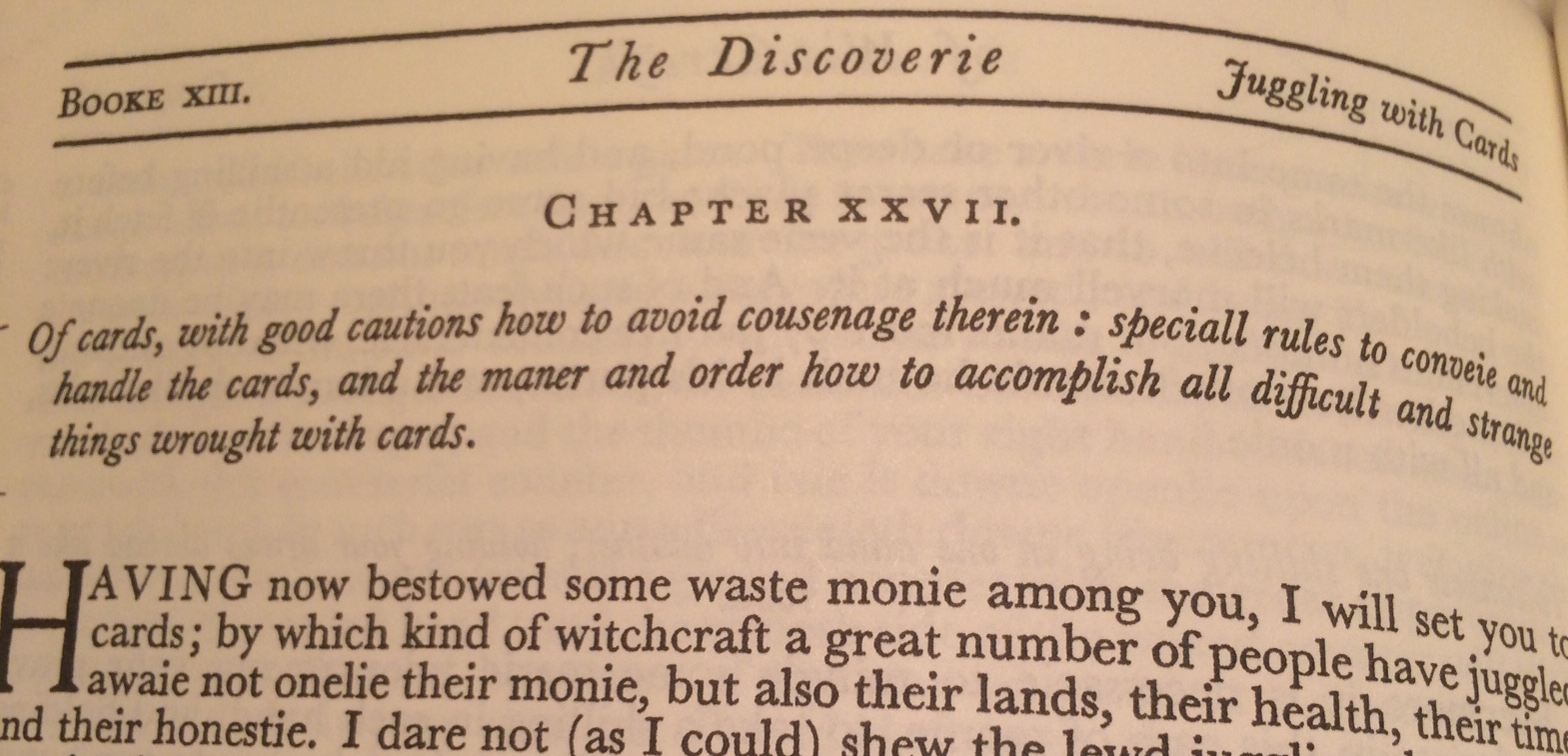It’s good to have friends like Shakespeare expert, Dr. Jennifer McDermott.
Today, I had the pleasure of giving a sixty-minute guest lecture and performance for her Witchcraft and Magic literature course. What a wonderful excuse this was to thoroughly work through one of conjuring’s earliest and most important works in the English language: Reginald Scot’s The Discoverie of Witchcraft. All serious students of magic have heard of this seminal text, which was first published in London in 1584. Sadly, few of them have read it.
If you have learned how to read and enjoy Shakespeare, then Scot’s Early Modern English descriptions of how to perform various magic effects are both accessible and fun linguistic puzzles. And don’t make the common 21st-century mistake of thinking that the book is filled with basic magic effects. There is plenty of real work in here. Many of the items described are performed by some of today’s top professionals. Others were hits during the Golden Age of stage conjuring (1875-1925). Still more can be purchased today at your local magic shop.
In addition to all of the great material for performers, there is the significant cultural and dramaturgical value of the book to consider. It is an invaluable source for any adaptation of Elizabethan plays that touch upon themes of witchcraft, sorcery, chicanery, astrology, alchemy, etc. Hint: nearly all of them do.
So, the next time that you read or teach or watch Christopher Marlowe’s Dr. Faustus or Ben Jonson’s The Alchemist don’t forget to also check out The Discoverie of Witchcraft.
Amazement will be your reward.
